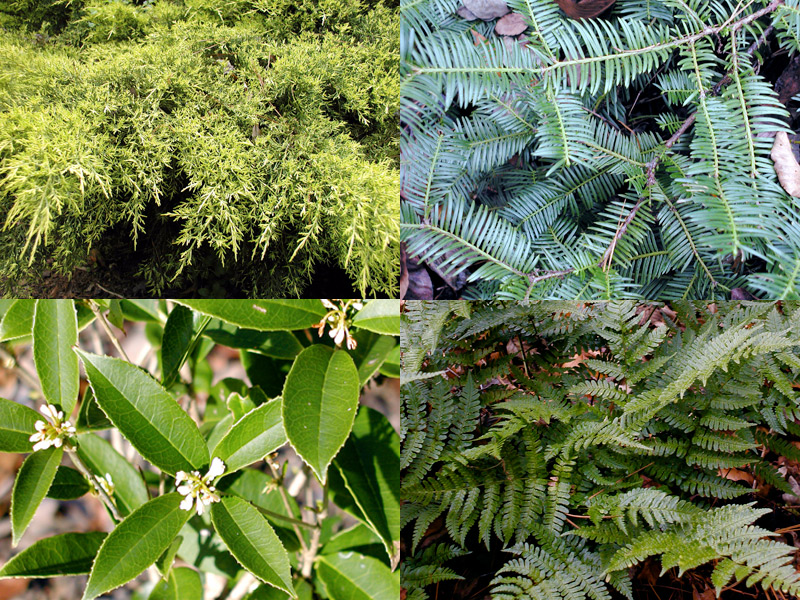Summer Garden Paths
 Friday, July 29, 2011 at 5:00PM
Friday, July 29, 2011 at 5:00PM There was a cool breeze this morning, a promise of weather changes to come in September. But only a promise. It is HOT out there, and warm mugginess often lingers long into the night. Afternoon thunderstorms may bring temporary cooling. I stuck my camera out the front door and took the following photos during a recent storm. The crepe myrtles are drooping because of the heavy rain:
I'm not doing much planting during these 'dog days' of summer, but I pull a few weeds and do a lot of dreaming. I like to get out and walk the garden paths immediately after a thunderstorm, before the sun returns and turns the moisture to steam. Garden paths are essential to define the spaces and to give humans and animals access to different areas of the garden. I smile when I see wild animals using my garden paths. A few of my paths came from preexisting foot paths and dog trots. I widened and weeded them, limbed up trees so one could easily walk beneath them, and defined some edges with rocks and other natural elements.
Large oaks and other trees grow along this path:
I put decorative plants, ornaments, and benches beside the paths. Here are views inside the Front Garden. The blue bench sits along the path in front of lavender blooming crepe myrtles. I recently moved the large piece of driftwood from another part of the Front Garden to a side path, shown in the second row, to better define it:
There are a few flowers blooming in the front garden:
Some more recent images of the Front Garden:Top: A mulched path separates the lawn from the Front Garden; Branch structure of a large japanese maple. 2nd row: A white pine , the only survivor of three I originally planted. The others succumbed to pine beetles. I am glad this one was spared; Rosa mutabilis, the butterfly rose, grows in front of the white pine.
I call this path the hydrangea walk:Top: An overview of the hydrangea walk. The large white hydrangea is 'Limelight'. 2nd row: A closer look at 'Limelight' blooms. 3rd row: As summer has advanced, 'Endless Summer' hydrangea has turned from brilliant blue to a dusty rose; 'Annabelle' hydrangea has turned from white to green. I think both are beautiful
A touch of autumn color is beginning to show in the Lady in Red hydrangeas. These grow along the hydrangea walk and also in the Woodland garden:
Across the road from the Front Garden the Woodland Garden is tucked into a little valley. After a thuderstorm the moss paths are lush:
More images from the Woodland Garden:1st row: Heuchera villosa 'Autumn Bride' is beginning to bloom; Stromanthe 'Tri-o-star' grows in a pot. 2nd row: Groundcover indigofera still has a few blooms; Flowers of Hosta 'Sum and Substance'. 3rd row: A mossy side path; A very old muscadine vine. 4th row: Variegated hydrangea; A young Southern magnolia borders a woodland path.I always begin a stroll through the garden with anticipation. What will I see? I almost missed the following little surprises. I was fortunate I had my camera ready!
I hope you enjoyed the tour along my summer garden paths. May August bring you many blessings!
Deborah
 Permalink
Permalink 
